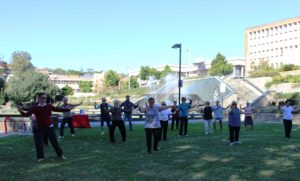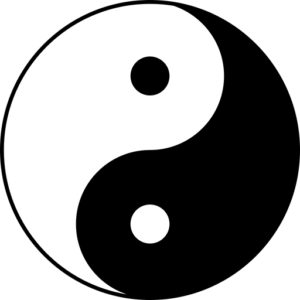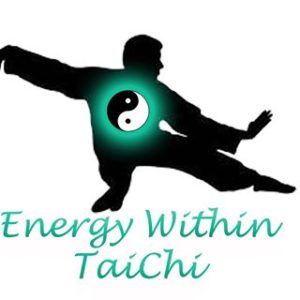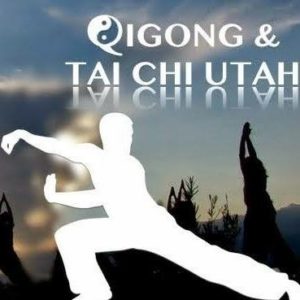Slanted FlyingJournal of Tai Chi Chuan
Training
Does Size Matter in Taijiquan?
Taijiquan (太極拳) strives to train fighting skills that don’t rely on “inherent natural abilities” like strength and speed, as indicated in the classic attributed to Yang Banhou (楊班侯) [translated by Paul Brennan]:
“There are many other schools of martial arts besides this one. Although the postures are different between them, they generally do not go beyond the strong bullying the weak and the slow yielding to the fast. The strong beating the weak and the slow submitting to the fast are both a matter of inherent natural ability and bear no relation to skill that is learned. Examine the phrase ‘four ounces moves a thousand pounds’, which is clearly not a victory obtained through strength. Or consider the sight of an old man repelling a group, which could not come from an aggressive speed.”
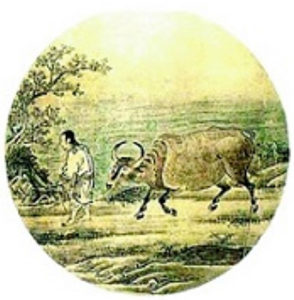 The concept of “four ounces moves a thousand pounds” indicates that size differences should not matter for someone skilled in the art of Taijiquan. Zheng Manqing/Cheng Manching (郑曼青) explains this principle using the analogy of leading a cow by using a cord passing through its nose: http://www.rockymountaintaichi.com/zmq-13-13-12
The concept of “four ounces moves a thousand pounds” indicates that size differences should not matter for someone skilled in the art of Taijiquan. Zheng Manqing/Cheng Manching (郑曼青) explains this principle using the analogy of leading a cow by using a cord passing through its nose: http://www.rockymountaintaichi.com/zmq-13-13-12
Although we don’t interact with training partners and opponents using body parts analogous to a cow’s sensitive nose, the analogy does emphasize the quality of leading a large or powerful partner/opponent without using much effort. But how do we translate this principle into practice?
What skills do we learn that would allow us to control someone larger and heavier (more massive) than us? Since F=ma (Newton’s second law of motion), it is clear that mass (“m”) does increase force (“F”), as does speed (or acceleration “a”). Even though a larger (or faster) person may generate greater force, how do we minimize the effectiveness or impact of that force when used against our training?
The analogy of leading (牽 qian) the cow requires the rope to connect the person with the nose of the cow. Without that connection, the cow is free to act independently from the person. In order to lead a large force, we need to maintain our connection to that force. One also does not bang into the cow’s nose, nor does one suddenly jerk on the rope; to lead the force of a partner/opponent, one cannot crash into nor separate from them.
We train to control a partner/opponent through contact. This is an important difference from most striking arts. Striking arts often bounce into and out of range, trying to keep a safe distance except when closing to strike. In Taijiquan it is important to stick and adhere, connect and follow (粘黏連隨 zhan nian lian sui) and to avoid crashing against or separating from them (顶匾丢抗 ding bian dui kang).
Ideally, we want to be able to strike, throw, lock, etc. from contact, which can require power to be expressed with very little or no windup and in a very short distance. This power generation is different than is typically seen in striking arts, which commonly use windups and longer distances to generate the acceleration that increases the strike’s power.
Our typical strategy is to gain control of the partner/opponent, through our contact with them, prior to striking them. If their stability is compromised, then it is difficult for them to defend against our attacks, or to counterattack. Furthermore, the power that can be released by an unstable partner/opponent is typically significantly lessened compared to when they are stable.
Striking arts commonly use avoidance, bobbing and weaving, covering, or retreating out of range, sometimes entering a clinch to get inside the opponent’s ideal striking range, etc. Taijiquan includes a different strategy that is closer to the idea of rolling with the punches; but instead of it being merely defensive in intent, we try to use this contact for controlling the partner/opponent and setting up counterattacks.
Rolling with the punches can be like a matador leading a powerful bull off target. One leads the partner/opponent to exert their power where they think a target is, but the “target” being insubstantial, like the matador’s cape. This is referred to as leading into emptiness (空 kong). One can also lead into emptiness by moving offline of the attack, or by guiding (leading) the attack off-target. If an attack fails to impact a target, then it does not matter how big its force is. When missing, their momentum makes them susceptible to counterattacks.
The acceleration used for typical strikes produces momentum, the direction of which is often difficult to change freely, smoothly or quickly. It is the partner/opponent’s momentum that we can train to take advantage of. If they commit energy in a particular direction, then we may be able to use their intent to lead them astray and to set up counterattacks.
When making the partner/opponent’s power miss, it is best to use the minimal amount of force that is sufficient to succeed (i.e, “four ounces” [四兩 si liang]). As Zheng Manqing points out in his article, using too much force when leading (being excessively heavy) often results in the partner/opponent feeling that force, and changing in response. If their change stops their momentum, then it is more difficult to take advantage of their movements.
In order to make a partner/opponent’s technique miss, we need to sense (聽勁 tingjin, listening energy) and understand (懂勁 dongjin) their energy and intent. We can learn more about a partner/opponent when in contact with them than we can just from looking at them. If we remain resilient and avoid stiffening up when we contact them, we can use our mechanoreceptors (sensors that respond to pressure) and proprioceptors (sensors that provide information about joint angle, muscle length, and muscle tension) to sense changes at the point of contact. With training, this information can be understood and used to control the partner/opponent.



